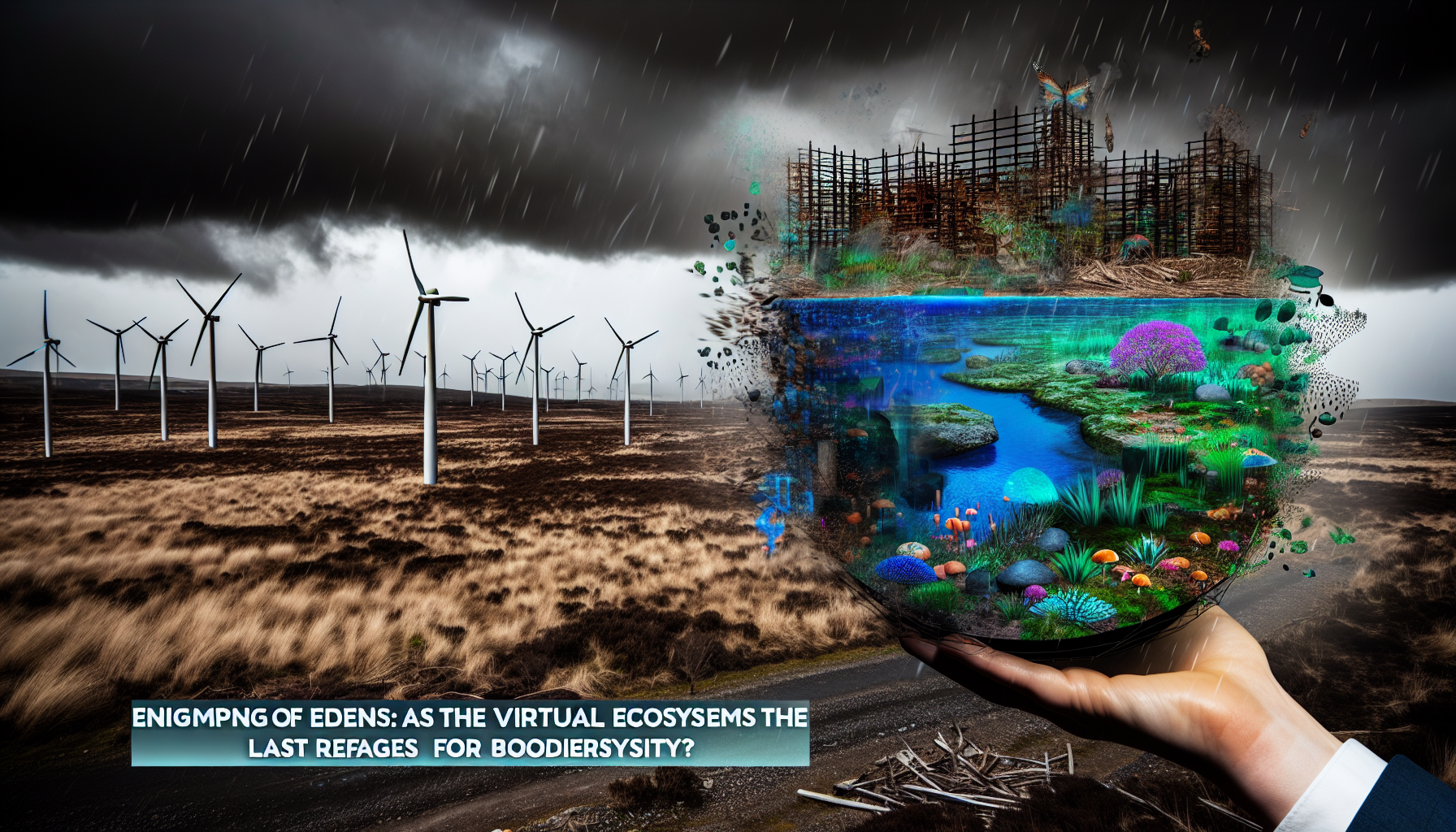In an era where the green splendor of Earth’s diverse ecosystems has been tarnished by the relentless smog of progress, humanity faces a question as somber as the impending twilight of nature itself: Where can biodiversity seek refuge in a world no longer hospitable? In the relentless pursuit of answers, science and technology propose a solution as paradoxical as it is fascinating – virtual ecosystems.
These are not the pixelated paradises of past video games but intricate simulations powered by state-of-the-art artificial intelligence harboring digital twins of species that once roamed our planet with vibrance. Like the mythical Eden, these virtual havens offer a glimpse into pristine habitats, meticulously modeled after the Earth’s natural landscapes, now desolate and nearly lifeless, encapsulating the irony of our time.
The question persists, however: Can these artificial sanctuaries, mere echoes of lost splendor, truly replace the complex interactions and evolutionary marvels found in actual nature? Critics argue that these simulated realities are no more than a curtain drawn upon the decay outside, a tool for placation and not salvation. Enthusiasts, however, believe that digital conservation could be key to retaining the genetic blueprints and ecological knowledge of species at the brink of extinction, long after the last rustling leaf has fallen in the forsaken wilds.
Delving into the myths of our own creation, we build virtual arks à la Noah, in a sea of data, to safeguard each species in the binary code. And yet, no technology can duplicate the gentle touch of rain on a meadow or the dance of a butterfly’s wing in the morning’s sunbeam. The virtual realms remain just that – vivid but intangible, capturing the essence but never the soul of an ecosystem.
One might draw parallels between these digital Edens and the rusting behemoths of deserted wind farms, as depicted in yesterday’s somber feature ‘The Rusting Giants – When Abandoned Wind Farms Whisper’. Both stand testament to humanity’s reach for permanence against nature’s impermanence. Both also serve as reminders that our endeavors, however grand in scale or intention, become relics of their own ambition when left unattended by the human spirit.
In the face of virtual conservation’s rise, ethical considerations are raised: Who decides which species to save, and how do we prioritize? The process of digital selection, potentially fraught with bias, mirrors the ecological neglect of years past. Advocates for real-world conservation urge a shift in focus, pushing for societal change and the adoption of sustainable practices to repair what remains of Earth’s depleting resources, rather than merely replicating them in a sanctuary of bytes and pixels.
While these artificial biomes invite us to ponder the marvels of our planet’s diversity, they also paint a stark portrait of desperation – our last attempt at holding onto the fragments of a crumbling world. It is through this lens that we can see the desperate irony in such efforts: as we strive to immortalize life in an artificial afterlife, we tacitly admit that, for many, the battle in the real world has already been lost.
Yet, as with all great screens of fiction, there remains a sliver of unwavering hope that perhaps these digital doppelgängers could spark a revolution, not within the confines of their code, but within the hearts of humankind. Maybe it is within these Enigmatic Edens that we find the impetus to rewrite our real-world trajectories, to shift from chroniclers of decline to active architects of a greener, more hopeful narrative. Or, at the very least, we preserve the memory of what once was, and what may yet be again, if only in dreams.
